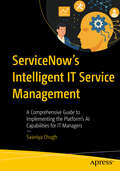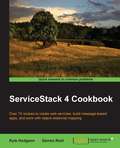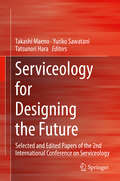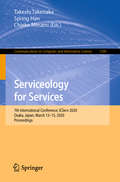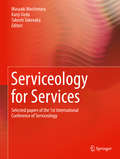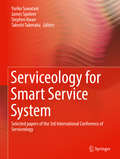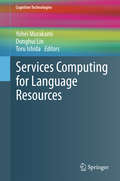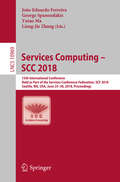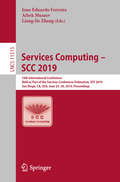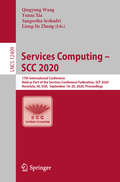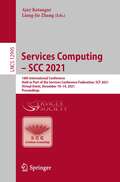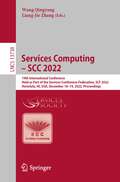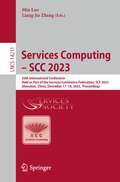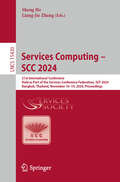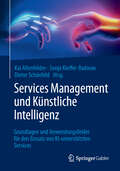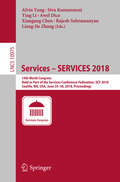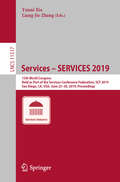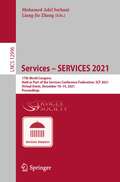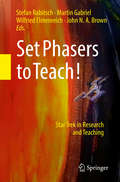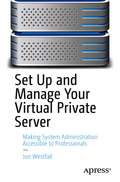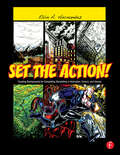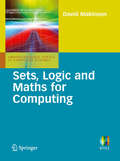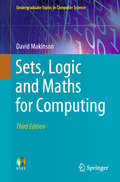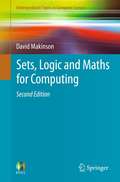- Table View
- List View
ServiceNow’s Intelligent IT Service Management: A Comprehensive Guide to Implementing the Platform’s AI Capabilities for IT Managers
by Saaniya ChughThis book explores how ServiceNow&’s AI capabilities are reshaping IT Service Management by enabling smarter, faster, and more efficient service delivery. It provides a practical guide to leveraging features like Predictive Intelligence, Virtual Agents, and Now Assist to elevate traditional ITSM processes. Emphasizing the importance of strategic planning and thoughtful implementation, it equips organizations to drive intelligent automation and achieve a seamless AI-powered transformation. Designed as a practical guide for IT administrators and decision-makers, this book provides actionable strategies and insights—from understanding ServiceNow's AI-driven innovations to implementing a robust ITSM framework. With step-by-step instructions and real-world examples, it equips you with the skills and resources necessary to harness AI's full potential, drive operational excellence, and align your IT services with your organization's strategic goals in the digital era. You Will: Learn how ServiceNow&’s AI capabilities can transform IT Service Management (ITSM) and its key benefits. Study real-world case studies demonstrating AI's impact on IT service delivery. Explore insights to navigate challenges and ensure a seamless AI adoption journey on your ServiceNow platform. Who This Book is for: IT Service Management (ITSM) managers, IT Managers and IT Leaders
ServiceStack 4 Cookbook
by Kyle Hodgson Darren ReidIf you are a .NET developer who is looking for a simpler way to build services, this is the book for you. It will show you how to write fast, maintainable APIs that are a pleasure to use and maintain starting from the database to the client and everything in-between.
Serviceology for Designing the Future: Selected and Edited Papers of the 2nd International Conference on Serviceology
by Yuriko Sawatani Takashi Maeno Tatsunori HaraThis book provides a useful overall guide to the state of the art in theory and practice of services. It can also serve as a reference book for researchers in various fields, including engineering, marketing, economics, and other disciplines. Advanced works presented here were selected from the proceedings of the Second International Conference on Serviceology (ICServ2014), held September 14–16, 2014. This book helps readers to understand serviceology, which tackles with a broad range of services, the globalization of the economy and also enhances the quality of life of local residents.
Serviceology for Services: 7th International Conference, ICServ 2020, Osaka, Japan, March 13–15, 2020, Proceedings (Communications in Computer and Information Science #1189)
by Takeshi Takenaka Spring Han Chieko MinamiThis book constitutes the refereed proceedings of the 7th International Conference on Serviceology for Services, held in Osaka, Japan, in March 2020.The 16 full papers and 3 short papers presented in this volume were carefully reviewed and selected from 58 submissions. The papers are organized around the following topics: hospitality management; service innovation and employee engagement; service marketing and consumer behavior; customer experience and service design; service engineering and implementation.
Serviceology for Services: Selected papers of the 1st International Conference of Serviceology (Communications In Computer And Information Science Ser. #1189)
by Masaaki Mochimaru Kanji Ueda Takeshi TakenakaServices are key activities in the globalization of the economy and also underlie the quality of life of local residents. The advanced work presented in this book was selected from the proceedings of the First International Conference on Serviceology (ICServ2013), held October 16–18, 2013 in Tokyo. This book provides a useful overall guide to the state of the art in theory and practice of services for researchers in various fields, including engineering, marketing, economics, and others. This work also facilitates the scientific systematization of services and promotes technological developments for solutions of industrial issues.
Serviceology for Smart Service System: Selected papers of the 3rd International Conference of Serviceology
by Yuriko Sawatani Takeshi Takenaka James Spohrer Stephen KwanServices are key activities in a globalized economy and they also underlie the quality of life of local residents. The advanced work presented in this book was selected from the proceedings of the Third International Conference on Serviceology (ICServ2015), held July 7–9, 2015, in San Jose, CA, USA. The conference was supported by the Society for Serviceology. The society was established in 2012 in Japan to explore the scientific systematization of services and to promote technological developments for solutions to industrial issues.This book provides a useful general guide to the state of the art in the theory and practice of services. It can also serve as a valuable reference book for researchers in a wide range of fields from engineering to marketing and economics.
Services Computing for Language Resources (Cognitive Technologies Ser.)
by Yohei Murakami Donghui Lin Toru IshidaDescribing the technologies to combine language resources flexibly as web services, this book provides valuable case studies for those who work in services computing, language resources, human–computer interaction (HCI), computer-supported cooperative work (CSCW), and service science. The authors have been operating the Language Grid, which wraps existing language resources as atomic language services and enables users to compose new services by combining them. From architecture level to service composition level, the book explains how to resolve infrastructural and operational difficulties in sharing and combining language resources, including interoperability of language service infrastructures, various types of language service policies, human services, and service failures.The research based on the authors’ operating experiences of handling complicated issues such as intellectual property and interoperability of language resources contributes to exploitation of language resources as a service. On the other hand, both the analysis based on using services and the design of new services can bring significant results. A new style of multilingual communication supported by language services is worthy of analysis in HCI/CSCW, and the design process of language services is the focus of valuable case studies in service science. By using language resources in different ways based on the Language Grid, many activities are highly regarded by diverse communities.This book consists of four parts: (1) two types of language service platforms to interconnect language services across service grids, (2) various language service composition technologies that improve the reusability, efficiency, and accuracy of composite services, (3) research work and activities in creating language resources and services, and (4) various applications and tools for understanding and designing language services that well support intercultural collaboration.
Services Computing – SCC 2018: 15th International Conference, Held as Part of the Services Conference Federation, SCF 2018, Seattle, WA, USA, June 25-30, 2018, Proceedings (Lecture Notes in Computer Science #10969)
by George Spanoudakis Liang-Jie Zhang João Eduardo Ferreira Yutao MaThis book constitutes the proceedings of the International Conference on Services Computing, SCC 2018, as part of SCF 2018, held in Seattle, WA, USA, in June 2018. The 12 papers presented in this volume were carefully reviewed and selected from numerous submissions. The papers cover the science and technology of leveraging computing and information technology to model, create, operate, and manage business services.
Services Computing – SCC 2019: 16th International Conference, Held as Part of the Services Conference Federation, SCF 2019, San Diego, CA, USA, June 25–30, 2019, Proceedings (Lecture Notes in Computer Science #11515)
by Liang-Jie Zhang Joao Eduardo Ferreira Aibek MusaevThis volume constitutes the proceedings of the 16th International Conference on Services Computing 2019, held as Part of SCF 2019 in San Diego, CA, USA in June 2019. The 9 full papers presented in this volume were carefully reviewed and selected from 15 submissions. They cover topics such as: foundations of services computing; scientific workflows; business process integration and management; microservices; modeling of services systems; service security and privacy; SOA service applications; and service lifecycle management.
Services Computing – SCC 2020: 17th International Conference, Held as Part of the Services Conference Federation, SCF 2020, Honolulu, HI, USA, September 18–20, 2020, Proceedings (Lecture Notes in Computer Science #12409)
by Qingyang Wang Liang-Jie Zhang Yunni Xia Sangeetha SeshadriThis volume constitutes the proceedings of the 17th International Conference on Services Computing 2020, held as Part of SCF 2020 in Honolulu, HI, USA in September 2020.. The 8 full papers and 2 short papers presented in this volume were carefully reviewed and selected from 20 submissions. They cover topics such as: foundations of services computing; scientific workflows; business process integration and management; microservices; modeling of services systems; service security and privacy; SOA service applications; and service lifecycle management.
Services Computing – SCC 2021: 18th International Conference, Held as Part of the Services Conference Federation, SCF 2021, Virtual Event, December 10–14, 2021, Proceedings (Lecture Notes in Computer Science #12995)
by Liang-Jie Zhang Ajay KatangurThis volume constitutes the proceedings of the 18th International Conference on Services Computing 2021, held as Part of SCF 2021 in December 2021 as a virtual event due to COVID-19. The 5 full papers and 2 short papers presented in this volume were carefully reviewed and selected from 21 submissions. It covers the science and technology of leveraging computing and information technology to model, create, operate, and manage business services.
Services Computing – SCC 2022: 19th International Conference, Held as Part of the Services Conference Federation, SCF 2022, Honolulu, HI, USA, December 10–14, 2022, Proceedings (Lecture Notes in Computer Science #13738)
by Liang-Jie Zhang Wang QingyangThis volume constitutes the proceedings of the 19th International Conference on Services Computing 2022, SCC 2022, held as part of SCF 2022 during December 10-14, 2022 in Honolulu, USA.The 8 full papers and 1 short paper presented in this volume were carefully reviewed and selected from 15 submissions. It covers the science and technology of leveraging computing and information technology to model, create, operate, and manage business services.
Services Computing – SCC 2023: 20th International Conference, Held as Part of the Services Conference Federation, SCF 2023, Shenzhen, China, December 17–18, 2023, Proceedings (Lecture Notes in Computer Science #14211)
by Liang-Jie Zhang Min LuoThis book constitutes the refereed proceedings of the 20th International Conference on Services Computing, SCC 2023, held in Shenzhen, China, during December 17–18, 2023.The 6 full papers in this book were carefully reviewed and selected from 18 submissions. They are organized in topical sections as follows: business modeling, business consulting, solution creation, service delivery, and software architecture design, development, and deployment.
Services Computing – SCC 2024: 21st International Conference, Held as Part of the Services Conference Federation, SCF 2024, Bangkok, Thailand, November 16-19, 2024, Proceedings (Lecture Notes in Computer Science #15430)
by Liang-Jie Zhang Sheng HeThis book constitutes the refereed proceedings of the 21st International Conference on Services Computing – SCC 2024, Held as Part of the Services Conference Federation, SCF 2024, held in Bangkok, Thailand, during November 16-19, 2024. The 7 full papers in this book were carefully reviewed and selected from 13 submissions. They are organized in topical sections as follows: business modeling, business consulting, solution creation, service delivery, and software architecture design, development, and deployment.
Services Management und Künstliche Intelligenz: Grundlagen und Anwendungsfelder für den Einsatz von KI-unterstützten Services
by Kai Altenfelder Dieter Schönfeld Sonja Kieffer-RadwanDas Herausgeberwerk bietet einen Einblick in das Thema Services Management und Künstliche Intelligenz. In den aufeinander aufbauenden Beiträgen beleuchten die Autorinnen und Autoren technische Grundlagen, praktische Anwendungsfelder, strategische und operative Überlegungen sowie Herausforderungen, die mit der Entwicklung von KI-basierten Services in Unternehmen einhergehen. Im Fokus stehen insbesondere die Kundenzentrierung, die unternehmensinterne KI-Readiness, das Wissensmanagement sowie eine kritische Betrachtung des Datenschutzes und ethischer Fragestellungen. Die Lesenden erhalten Impulse und Best-Practices für die erfolgreiche Implementierung von generativer KI im Services Management, um die Servicequalität zu verbessern und die Zufriedenheit der Kunden proaktiv zu steigern.
Services – SERVICES 2018: 14th World Congress, Held as Part of the Services Conference Federation, SCF 2018, Seattle, WA, USA, June 25–30, 2018, Proceedings (Lecture Notes in Computer Science #10975)
by Ying Li Liang-Jie Zhang Alvin Yang Siva Kantamneni Awel Dico Xiangang Chen Rajesh SubramanyanThis book constitutes the refereed proceedings of the 14th World Congress on Services, SERVICES 2018, held as part of the Services Conference Federation, SCF 2018, in Seattle, USA, in June 2018. The 10 full papers and 3 short papers presented were carefully reviewed and selected from 22 submissions. The papers cover topics in the field of software foundations and applications with a focus on novel approaches for engineering requirements, design and architectures, testing, maintenance and evolution, model-driven development, software processes, metrics, quality assurance and new software economics models, search-based software engineering, benefiting day-to-day services sectors and derived through experiences, with appreciation to scale, pragmatism, transparency, compliance and/or dependability.
Services – SERVICES 2019: 15th World Congress, Held as Part of the Services Conference Federation, SCF 2019, San Diego, CA, USA, June 25–30, 2019, Proceedings (Lecture Notes in Computer Science #11517)
by Liang-Jie Zhang Yunni XiaThis book constitutes the refereed proceedings of the 15th World Congress on Services, SERVICES 2019, held as part of the Services Conference Federation, SCF 2019, in San Diego, USA, in June 2019.The 11 full papers and 2 short papers presented were carefully reviewed and selected from 14 submissions. The papers cover topics in the field of software engineering foundations and applications with a focus on novel approaches for engineering requirements, design and architectures, testing, maintenance and evolution, model-driven development, software processes, metrics, quality assurance and new software economics models, search-based software engineering, benefiting day-to-day services sectors and derived through experiences, with appreciation to scale, pragmatism, transparency, compliance and/or dependability.
Services – SERVICES 2020: 16th World Congress, Held as Part of the Services Conference Federation, SCF 2020, Honolulu, HI, USA, September 18-20, 2020, Proceedings (Lecture Notes in Computer Science #12411)
by Liang-Jie Zhang Siva Kantamneni Balaji Palanisamy Joao Eduardo Ferreira Kejiang YeThis book constitutes the refereed proceedings of the 16th World Congress on Services, SERVICES 2020, held as part of the Services Conference Federation, SCF 2020, in Honolulu, HI, USA, in September 2020. The conference was held virtually due to the COVID-19 pandemic.The 5 full papers and 4 short papers presented were carefully reviewed and selected from 10 submissions. The papers cover topics in the field of software engineering foundations and applications with a focus on novel approaches for engineering requirements, design and architectures, testing, maintenance and evolution, model-driven development, software processes, metrics, quality assurance and new software economics models, search-based software engineering, benefiting day-to-day services sectors and derived through experiences, with appreciation to scale, pragmatism, transparency, compliance and/or dependability.
Services – SERVICES 2021: 17th World Congress, Held as Part of the Services Conference Federation, SCF 2021, Virtual Event, December 10–14, 2021, Proceedings (Lecture Notes in Computer Science #12996)
by Liang-Jie Zhang Mohamed Adel SerhaniThis book constitutes the refereed proceedings of the 17th World Congress on Services, SERVICES 2021, held as part of the Services Conference Federation, SCF 2021, in December 2021. The conference was held virtually due to the COVID-19 pandemic. The 7 full papers and 2 short papers presented were carefully reviewed and selected from 43 submissions. The papers cover topics in the field of Advertising Services, Banking Services, Broadcasting & Cable TV Service, Business Services, Communications Services, Government Services, Real Estate Operations Services, Schools and Education Services, Healthcare Services, and much more.
Set Phasers to Teach!: Star Trek in Research and Teaching
by Wilfried Elmenreich John N.A. Brown Stefan Rabitsch Martin GabrielFor 50 years, Star Trek has been an inspiration to its fans around the world, helping them to dream of a better future. This inspiration has entered our culture and helped to shape much of the technology of the early 21st Century.The contributors to this volume are researchers and teachers in a wide variety of disciplines; from Astrophysics to Ethnology, from English and History to Medicine and Video Games, and from American Studies to the study of Collective Computing Systems. What the authors have in common is that some version of Star Trek has inspired them, not only in their dreams of what may be, but in the ways in which they work - and teach others to work - here in the real world. Introduced with references to Star Trek films and television shows, and illustrated with original cartoons, each of the 15 chapters included in this volume provides insights into research and teaching in this range of academic fields.
Set Up and Manage Your Virtual Private Server: Making System Administration Accessible to Professionals
by Jon WestfallThe need for every professional to have a solid presence on the Internet is more important than ever before. Having a presence beyond an email account, such as a custom web page or web application, usually requires a clumsy assortment of outside services or hiring a dedicated administrator. Thus it is more sensible for the average professional to become adept at managing their own private server. In Set Up and Manage Your Virtual Private Server, author Jon Westfall expertly designs interesting, understandable lessons for professionals such as teachers, doctors, lawyers, and more to deploy their own virtual private server. He walks you through choosing the right service and customizing it for your specific business or personal needs, and does this with great ease while instilling invaluable knowledge. Basics such as setting up users, managing security and firewalls, installing and updating software, and troubleshooting by reviewing log files, backing up data, and so much more. Set Up and Manage Your Virtual Private Server equips you with the power of knowledge to set your web presence apart from the rest. You now have complete control over your virtual brand that is your own—separate from any employer or affiliate. Your career mobility is in your hands with the ability to run your own private server at your fingertips. The digital era centers this technical literacy and independence as a critical skillset.What You Will LearnUnderstand basic server terminology and the way servers operate and are networked togetherSee how software is used on a server and its role (for example, Linux, Apache, MySQL, PHP, and so on)Get comfortable with the basic command-line operation of a virtual private server to set up users, manage security and firewalls, install software, update software, and troubleshoot by reviewing log filesStore and back up important informationIdentify, analyze, and deploy open-source software products that can enhance productivityWho This Book Is ForNon-tech professionals, individuals who have an established professional career, looking to understand more about how to set up and manage a private server.
Set the Action!: Creating Backgrounds For Compelling Storytelling In Animation, Comics, And Games
by Elvin HernandezCreate the Gotham for your Batman, the African savannah for your Simba, or the bustling newsroom for your Clark Kent. Background, setting, environment.whatever you call it, it is the silent character in the visual story, and a dynamic and compelling setting can define and hone the action and drama of your story. If you're in the habit of creating disembodied characters or adding backgrounds as an afterthought, Set the Action! will help you understand and utilize the importance of the setting in your narrative. Understand perspective, blocking, and color-and focus your narrative by establishing and designing your setting to interact with characters and story.
Sets, Logic and Maths for Computing
by David MakinsonThis easy-to-follow textbook introduces the mathematical language, knowledge and problem-solving skills that undergraduates need to study computing. The language is in part qualitative, with concepts such as set, relation, function and recursion/induction; but it is also partly quantitative, with principles of counting and finite probability. Entwined with both are the fundamental notions of logic and their use for representation and proof. Features: teaches finite math as a language for thinking, as much as knowledge and skills to be acquired; uses an intuitive approach with a focus on examples for all general concepts; brings out the interplay between the qualitative and the quantitative in all areas covered, particularly in the treatment of recursion and induction; balances carefully the abstract and concrete, principles and proofs, specific facts and general perspectives; includes highlight boxes that raise common queries and clear confusions; provides numerous exercises, with selected solutions.
Sets, Logic and Maths for Computing (Undergraduate Topics in Computer Science)
by David MakinsonThis easy-to-understand textbook introduces the mathematical language and problem-solving tools essential to anyone wishing to enter the world of computer and information sciences. Specifically designed for the student who is intimidated by mathematics, the book offers a concise treatment in an engaging style.The thoroughly revised third edition features a new chapter on relevance-sensitivity in logical reasoning and many additional explanations on points that students find puzzling, including the rationale for various shorthand ways of speaking and ‘abuses of language’ that are convenient but can give rise to misunderstandings. Solutions are now also provided for all exercises.Topics and features: presents an intuitive approach, emphasizing how finite mathematics supplies a valuable language for thinking about computation; discusses sets and the mathematical objects built with them, such as relations and functions, as well as recursion and induction; introduces core topics of mathematics, including combinatorics and finite probability, along with the structures known as trees; examines propositional and quantificational logic, how to build complex proofs from simple ones, and how to ensure relevance in logic; addresses questions that students find puzzling but may have difficulty articulating, through entertaining conversations between Alice and the Mad Hatter; provides an extensive set of solved exercises throughout the text.This clearly-written textbook offers invaluable guidance to students beginning an undergraduate degree in computer science. The coverage is also suitable for courses on formal methods offered to those studying mathematics, philosophy, linguistics, economics, and political science. Assuming only minimal mathematical background, it is ideal for both the classroom and independent study.
Sets, Logic and Maths for Computing, 2nd Ed.
by David MakinsonThis easy-to-follow textbook introduces the mathematical language, knowledge and problem-solving skills that undergraduates need to study computing. The language is in part qualitative, with concepts such as set, relation, function and recursion/induction; but it is also partly quantitative, with principles of counting and finite probability. Entwined with both are the fundamental notions of logic and their use for representation and proof. Features: teaches finite math as a language for thinking, as much as knowledge and skills to be acquired; uses an intuitive approach with a focus on examples for all general concepts; brings out the interplay between the qualitative and the quantitative in all areas covered, particularly in the treatment of recursion and induction; balances carefully the abstract and concrete, principles and proofs, specific facts and general perspectives; includes highlight boxes that raise common queries and clear confusions; provides numerous exercises, with selected solutions.
